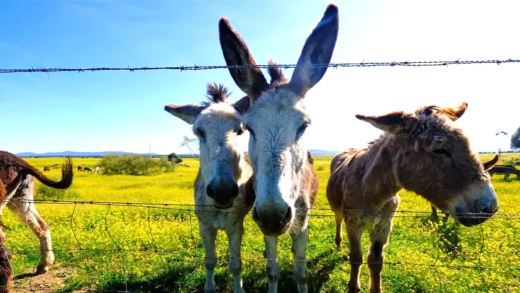Cheese is a versatile food that enhances culinary experiences through various types and pairings. Proper storage is essential for maintaining its quality, while cultural practices showcase its significance worldwide. Enjoying cheese with fruits, wines, and meats can elevate meals, making it a delightful subject of exploration.
How Cheese is Made
Cheese production begins with milk. Understanding how cheese is made involves several key steps:
- Milk Selection: The quality of cheese starts with the milk used. Cow, goat, or sheep milk can all be used, each imparting unique flavors.
- Pasteurization: This step involves heating the milk to kill harmful bacteria, ensuring safety and extending shelf life.
- Adding Cultures: Specific bacteria are added to the milk, which begin the fermentation process. This affects the flavor and texture.
- Coagulation: Rennet is added to curdle the milk, forming curds and whey. This is where the magic begins!
- Cutting the Curd: The curds are cut into smaller pieces to facilitate whey drainage, crucial for texture.
- Cooking and Washing: The curds may be cooked or washed to further develop texture and flavor.
- Draining: The whey is drained away, and the curds are pressed into molds.
- Aging: Cheese is aged in controlled conditions, allowing flavors to develop over time.
This step-by-step process is foundational for producing cheese, and each step plays a vital role in determining the final product’s flavor and texture.
Types of Cheese
Exploring the types of cheese reveals a world of diversity. Here’s an overview:
- Fresh Cheese: Soft and mild, these cheeses, like ricotta and mozzarella, are not aged.
- Soft Cheese: Brie and Camembert are examples of soft cheeses with creamy textures and edible rinds.
- Hard Cheese: Cheddar and Parmesan are aged longer, offering intense flavors and firm textures.
- Blue Cheese: Characterized by its blue veins, cheeses like Roquefort and Gorgonzola have a distinct sharp taste.
- Processed Cheese: These cheeses, like American cheese, are made from a blend of natural cheeses and additives.
Discovering these varieties enhances appreciation for cheese and its culinary uses.
Unique Characteristics of Cheese
Each cheese type boasts unique characteristics that make it special. Here’s what sets them apart:
- Flavor: The flavor profile can range from mild to sharp, influenced by factors like milk source, aging, and added cultures.
- Texture: Cheese can be creamy, crumbly, or hard, affecting how it melts and pairs with other foods.
- Appearance: Color and rind type vary widely; some cheeses are white, while others are vibrant yellow or even blue.
- Smell: The aroma can be a strong indicator of flavor, with some cheeses having pungent scents that reflect their rich taste.
Learning about these distinct features enriches the cheese experience, making it a delightful subject for exploration.
How Cheese Enhances Flavor
Cheese plays a pivotal role in enhancing the taste of various dishes. Its unique flavors can elevate a meal from ordinary to extraordinary. Here’s how:
- Flavor Profile: Cheese can add richness, creaminess, or sharpness. For example, a tangy goat cheese can brighten a salad, while a creamy brie can enhance a savory tart.
- Texture Contrast: The addition of cheese provides a delightful contrast. A crunchy cracker topped with soft cheese creates a satisfying bite.
- Umami Boost: Many cheeses are packed with umami, the savory flavor that enhances the overall taste experience. Parmesan, for instance, adds depth to pasta dishes.
- Pairing Magic: Cheese pairs beautifully with various ingredients, making it versatile. From fruits and nuts to wines and meats, it complements a wide array of flavors.
Understanding how cheese can change the flavor profile of dishes allows for more creative culinary adventures. By experimenting with different cheeses, one can discover new combinations that delight the palate.
Exploring Strong Odor Cheeses
Some cheeses are notorious for their strong odors. Understanding why certain cheeses smell pungent can pique curiosity. Here’s what contributes to these aromas:
- Bacterial Action: The fermentation process leads to the production of volatile compounds, which can create strong smells. For example, Limburger cheese is famous for its powerful aroma.
- Rind Development: Cheeses with natural rinds, like Brie, can develop strong smells due to the bacteria thriving on the surface.
- Aging Conditions: The environment where cheese is aged affects its smell. Humid, warm conditions can intensify odors, making some cheeses more aromatic.
Curiosity about why some cheeses have pungent aromas can lead to a greater appreciation for their unique flavors. While the smell may be off-putting to some, the taste can be surprisingly delightful.
Health Benefits of Cheese
Including cheese in your diet offers several nutritional advantages. Here are some key benefits:
- Rich in Nutrients: Cheese is a great source of calcium, protein, and vitamins A and B12, essential for maintaining bone health and muscle function.
- Probiotics: Certain cheeses, especially aged varieties, contain probiotics that support gut health.
- Heart Health: Some studies suggest that moderate cheese consumption may be linked to a lower risk of heart disease due to its fat content.
- Satiety: The protein and fat in cheese can promote feelings of fullness, helping to control appetite.
Finding out the positive health aspects of cheese consumption encourages a balanced approach to enjoying this delicious food. Moderation is key, as with any food, to reap the benefits without overindulgence.
Proper Cheese Storage
Proper cheese storage is crucial for maintaining its freshness and flavor. To keep cheese at its best, follow these best practices:
- Temperature Control: Store cheese in the refrigerator, ideally at a temperature between 35°F and 45°F (1°C to 7°C). This helps prevent spoilage while allowing flavors to develop.
- Wrapping: Use wax paper or parchment paper to wrap cheese, allowing it to breathe. Avoid plastic wrap, which can trap moisture and lead to mold growth.
- Cheese Box or Container: Consider using a dedicated cheese box or container with ventilation holes. This helps regulate humidity and prevents the cheese from drying out.
- Separate Strong Smells: Keep strong-smelling cheeses away from milder ones to avoid flavor contamination. Store them in separate containers if necessary.
- Check Regularly: Inspect cheese for any signs of spoilage, such as mold or an off smell. If you notice mold on hard cheeses, simply cut away the affected area, as it may still be safe to eat.
Learning how to store cheese properly ensures that you can enjoy its flavors and textures for as long as possible, maximizing your cheese-eating experience.
Cheese Pairing Suggestions
Cheese pairing can elevate any meal, creating delightful combinations that tantalize the taste buds. Here are some tips for pairing cheese with food and drinks:
- Fruits: Pair cheeses like Brie with fresh fruits such as apples or pears. The sweetness of the fruit complements the creaminess of the cheese.
- Nuts: Hard cheeses like aged Gouda go well with nuts such as almonds or walnuts, adding a crunchy texture to the creamy cheese.
- Wine: Match cheese with wine for a classic pairing. A sharp Cheddar pairs nicely with a robust red wine, while a creamy blue cheese complements sweet dessert wines.
- Meats: Charcuterie boards featuring cured meats and various cheeses create a balanced flavor profile. Prosciutto pairs excellently with soft cheeses like mozzarella.
- Breads: Different breads can enhance cheese flavors. Try a crusty baguette with goat cheese or whole grain crackers with sharp cheddar.
Getting tips on how to enjoy cheese with other foods opens up a world of culinary creativity, allowing you to experiment and find your favorite pairings.
Cheese in Different Cultures
Cheese holds a significant place in many cultures around the world, reflecting unique traditions and culinary practices. Here’s how various cultures incorporate cheese:
- Italy: Italian cuisine features a wide variety of cheeses, including mozzarella, Parmesan, and Gorgonzola, often used in pasta dishes and pizzas.
- France: Known for its cheese diversity, France offers cheeses like Camembert and Roquefort, commonly enjoyed with bread and wine.
- Mexico: Fresh cheeses like queso blanco and queso fresco are staples in Mexican dishes, adding flavor to tacos and enchiladas.
- Greece: Feta cheese is a key ingredient in Greek salads and pastries, showcasing its salty and tangy flavors in Mediterranean cuisine.
- Switzerland: Swiss cheeses like Emmental and Gruyère are famous for fondue and raclette, enjoyed in communal dining settings.
Understanding the cultural significance and uses of cheese globally enriches the appreciation of this versatile food, highlighting its role in bringing people together through shared meals.





Comments are closed.